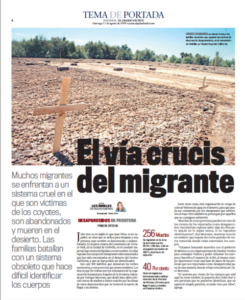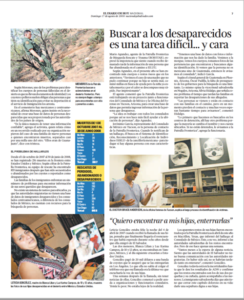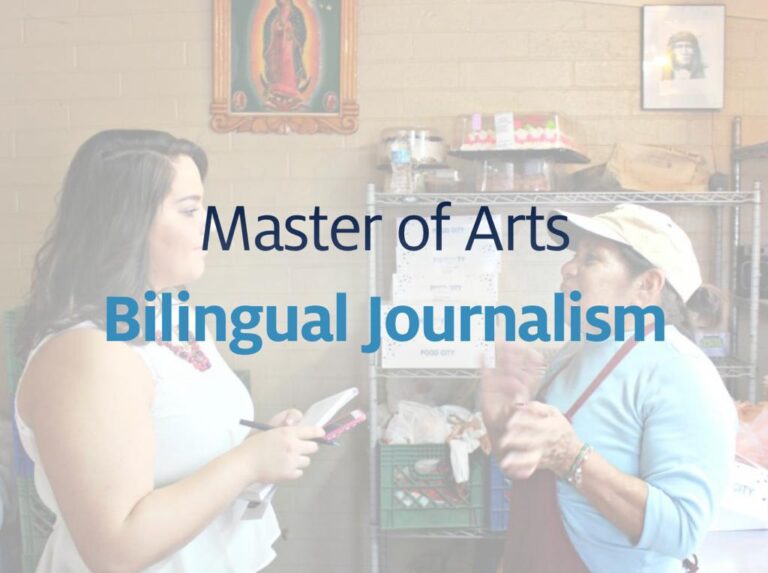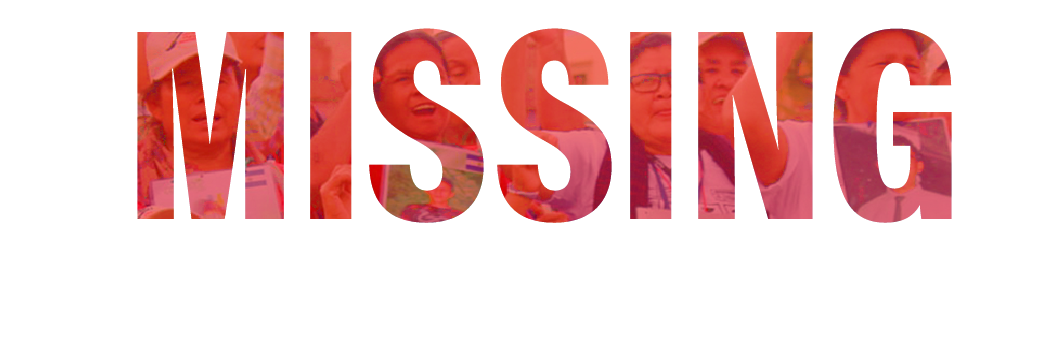About the Project

This project is born from the need that I have seen as a journalist covering the immigration issue for almost 18 years, facing the families of migrants who do not know what happened to their loved ones after crossing the international border into the United States.
According to a report published by the United Nations Office for the Coordination of Humanitarian Affairs, 850 migrants lost their lives on the US-Mexico border in 2022.
Some of these migrants were found and identified, however, there are hundreds of unidentified migrants in forensic offices.
Interest in the border
When I was a reporter on immigration issues for Hoy-Los Angeles newspaper (Los Angeles Times in Spanish), I was nominated for an Immigration Fellowship at the University of Southern California (USC) amongst other twelve journalists from other Hispanic media outlets in the US.
We traveled to Tucson, Arizona, and spent a week listening to experts on EEUU – Mexico border issues. We also traveled to Altar, Sonora, to speak with migrants preparing to cross illegally into US territory.
At the end of this fellowship, we had to present a news story about the immigration issues along the US/Mexico border. This is how the story of Leticia González arose, a Salvadoran mother who paid a human smuggler to bring her two daughters into the United States to be reunited with her in Los Angeles, California. Many days passed, and she did not know anything about them. All she was told by the smuggler that her children had crossed the border.
I traveled to Tucson, Arizona, and requested an international border tour with an US Border Patrol Agent, a member of the Border Patrol Search, Trauma and Rescue Team (BORSTAR); the idea was to learn about their work and to try to figure out what had happened to Leticia children.
During the ride-along, the agent received a call from a rancher who found a body. We went to the location and discovered the human skeletal remains that had female clothing garments attached to the rid cage and hip bone. The body and personal belongings in the immediate area appeared to be of a female migrant.
That day, we determined that there was much information needed to know where to initiate a search all along the US/Mexico international border. After several months of searching, Leticia learned that the bodies of her children were found near McCallen, Texas.


About the Autor

Multimedia Journalist | Digital Content Producer | Producer and News Reporter | Border & Immigration I Investigative Reporter | Politics | Media Strategist.
Paula Díaz is a journalist with over 20 years of experience covering immigration issues, passionate about human rights and social justice in the United States and its impact on Latin Americans.
During these two decades has learned of hundreds of family stories looking for their missing loved ones in the inhospitable southern border of the United States and has firsthand knowledge of the challenges these families have to undergo.
She specializes in investigative reporting, which brings to light the problematic issues that many migrants face.
She is currently the Univision-Arizona Digital Content Manager. In addition, she has worked with some of the most important news media outlets in the United States, such as Telemundo and EFE, the largest Spanish news media worldwide.
She began her journalism career in the United States as a Los Angeles Times Spanish newspaper field reporter. She was a correspondent for El Diario de Hoy and La Prensa Gráfica, both the most important newspapers in El Salvador.
Her stories have been published throughout Latin America, Spain, and the United States. She migrated to California in 2001 to continue her journalism career, which she initially started in her native Colombia.
She obtained her bachelor’s in journalism and communication from Universidad Autónoma de Cali and graduated from the Masters’s program in bilingual journalism at the University of Arizona in Tucson, Arizona.
Contact: [email protected]
About the Bilingual Journalism Program (BJP) at the University of Arizona
The Master’s in Bilingual Journalism Program at the University of Arizona is for professionals from different disciplines who want to report on the Latino communities in the United States and abroad. It is one of the only completely bilingual programs in the country.
Graduates of the program obtained written, digital, and television journalism skills in English and Spanish.
This program allows students to explore local projects. In addition, being a university located one hour from the border with Mexico, students explore and work on stories that inform migrants in the US and Latin America. Something is looking for on this website.
These are the degree projects of the first generation of graduates of the Bilingual Journalism Program at the University of Arizona (BJP).
Changing the Script by Ashley Morales
La Frontera y sus Ojazos Negros by Mar Ruíz
Keeping la Cultura Viva en NY by Vanessa Lucero



